Antique China Patterns are the icing on the cake for China dishes. They’re colorful, each stroke crafted with uniqueness, mastery, and special beauty, and they have helped preserve the relevance of China plates over the years, making them the cynosure of all eyes.
These patterns range from $25 to $100 on average but limited edition pieces can cost as much as $5000.
We’ll be digging deep into the history, manufacture process, and everything there’s to know about antique China patterns. At the end of this read, you’ll clearly be able to differentiate between the different types of antique China patterns.
Table of Contents
15 Most Valuable Antique China Pattern
Here’s a list of the 15 Most Valuable Antique China Patterns today. The items on this list are culled from verifiable sources after thorough research; any similar list is coincidental.
S/N |
Name |
Release Date |
Price |
1 |
Chelsea Anchor Porcelain |
1752 |
$6000 |
2 |
Flora Danica |
1790 |
$3,840 |
3 |
Ming Dragon Red Meissen |
1730 |
$1,478 |
4 |
Constance by Bernardaud |
2005 |
$1,000 |
5 |
Countryware by Coalport |
1750 |
£1,000 |
6 |
Royal Albert Old Country Roses |
1962 |
£300 |
7 |
Fluted Blue Royal Copenhagen Pattern |
1940 |
$263.40 |
8 |
Lenox Holiday Pattern |
1974 |
$256 |
9 |
Wedgwood Florentine |
1931 |
$227 |
10 |
Wedgwood Fallow Deer Pattern |
1910 |
$213 |
11 |
Mottahedeh Tobacco Leaf Pattern |
1780 |
$175 |
12 |
Wedgwood Classic Jasperware |
1770 |
$100 |
13 |
Portmeirion Botanical Garden |
1972 |
$85 |
14 |
Spode Blue Italian |
1770 |
A$110 |
15 |
Blue Willow Pattern |
1779 |
$29.95 |
15. Blue Willow Pattern
Price: $29.95
Release Date: 1779
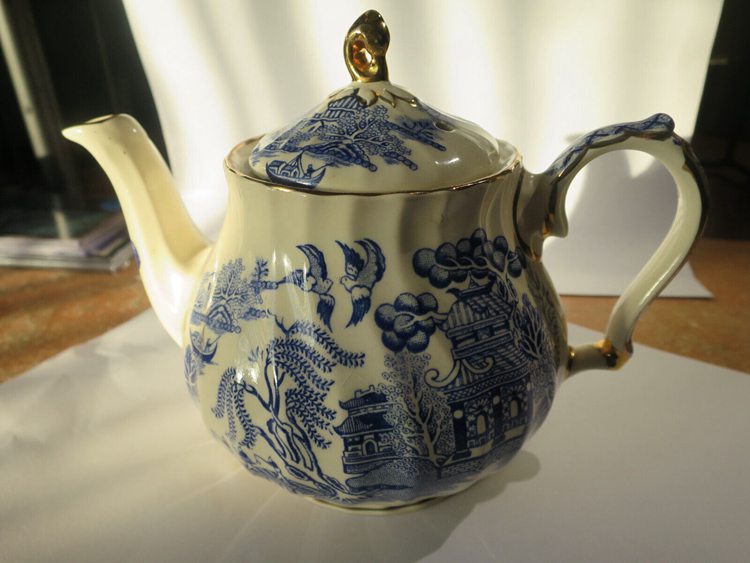
The blue willow pattern rose to prominence in England; it takes its root in the Chinese ceramics industry, and is a fairytale about star-crossed lovers.
This pattern, which was designed by Thomas Turner in 1779 apart from its enticing blue and white patterns, is popular for its ability to fit into modern dining settings even though they’re very old. Their elegance is buzzworthy, and we’re in awe of this awesome shade.
14. Spode Blue Italian
Price: A$110
Release Date: 1770
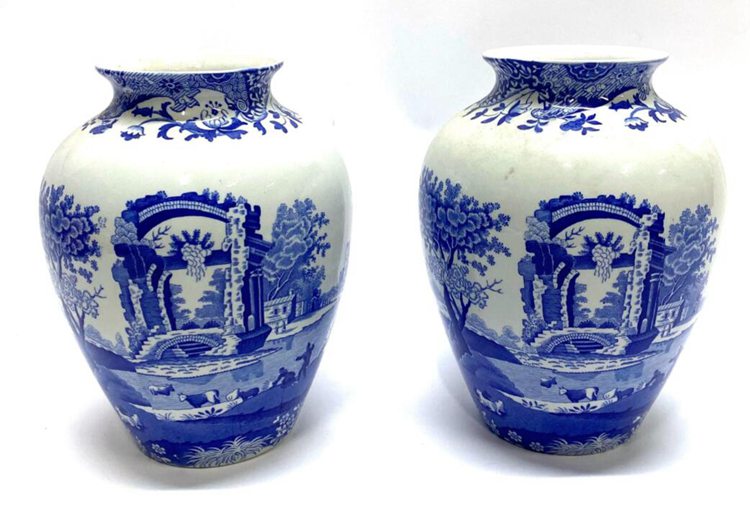
Spode is an England company founded in 1770 and recognized for making and selling Bone China and creating its blue designs like the famous Blue Italian Line which debuted in 1816 and has become one of their most valuable patterns.
13. Portmeirion Botanical Garden
Price: $85.00
Release Date: 1972
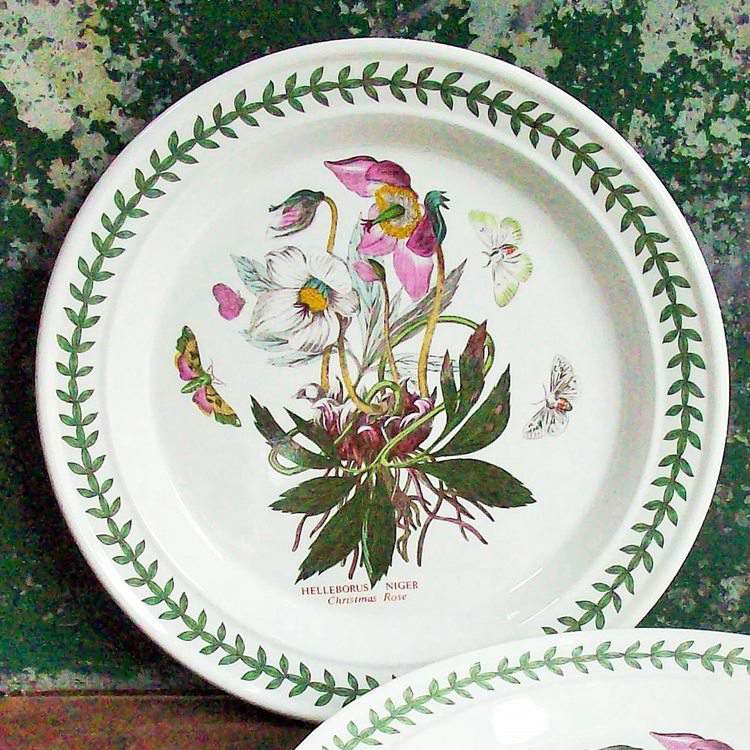
The most popular pattern from the Portmeirion company is the botanical rage, also called the botanic garden. They’re made of simple floral designs on off-white porcelain in dandelions, sunflowers, lilies, and wild roses.
12. Wedgwood Classic Jasperware
Price: $100
Release Date: 1770
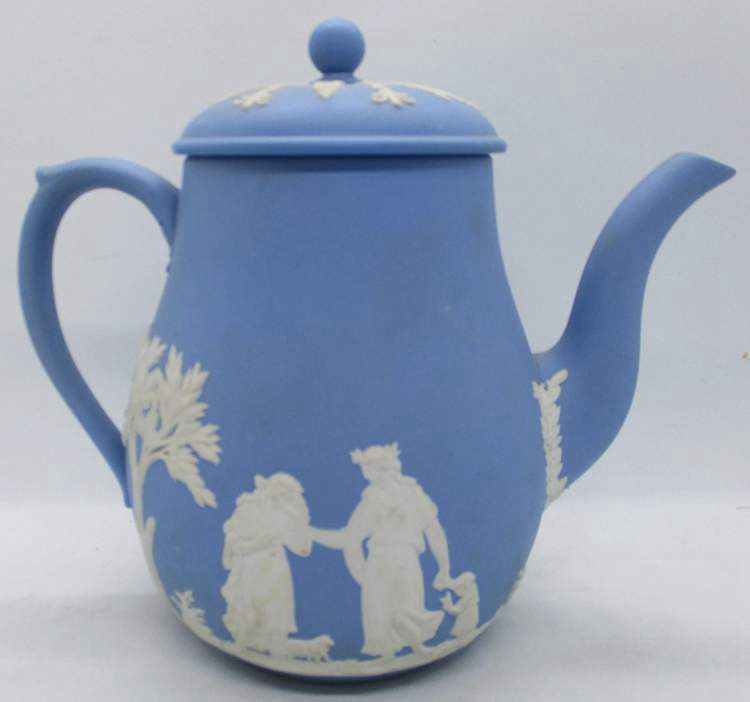
The jasperware is a Wedgwood classic that debuted in the 18th century. This pattern is known for its matte base layer, usually a pale blue hue decorated with scenes from Greece and Rome in a sharply contrasting white.
The rich blue and white marriage add a touch of class, taste, and timeless beauty to any setting, while the matte base adds a much-needed modern touch.
11. Mottahedeh Tobacco Leaf Pattern
Price: $175
Release Date: 1780
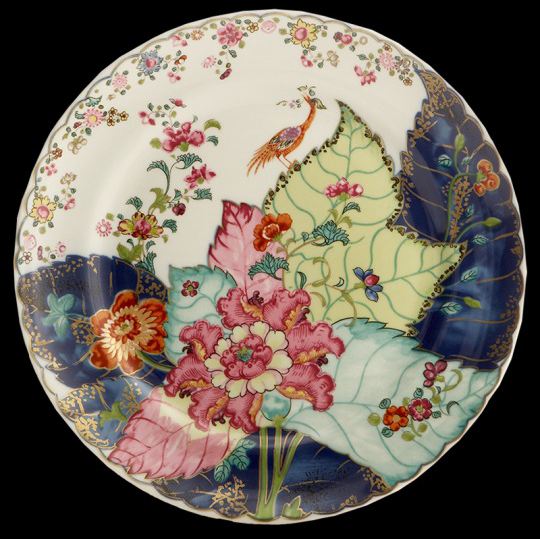
The tobacco leaf pattern by Mottahedeh was produced in 1780 and originally made in China for export to other countries. The highly prized pattern features a small phoenix bird perching patiently on the leaves of a blooming tobacco plant.
The pattern is made up of 27 colors and 22k gold. It stands out as one of the longest-running patterns from the stables of Mottahedeh.
10. Wedgwood Fallow Deer Pattern
Price: $213
Release Date: 1910
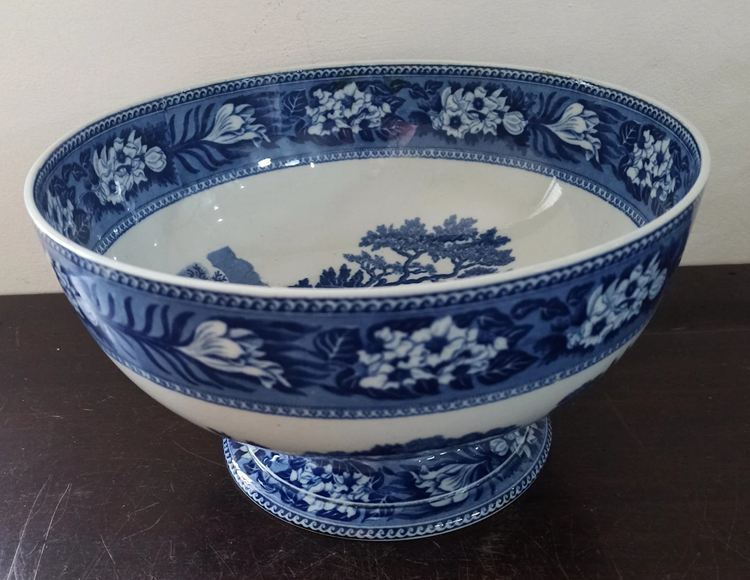
This fruit bowl in the fallow deer pattern was produced around 1916 and is on sale for $213 on Etsy. Like spode and the blue willow pattern, the fallow deer also shines brightly in hues of blue and white but with wild floral details.
9. Wedgwood Florentine
Price: $227
Release Date: 1931
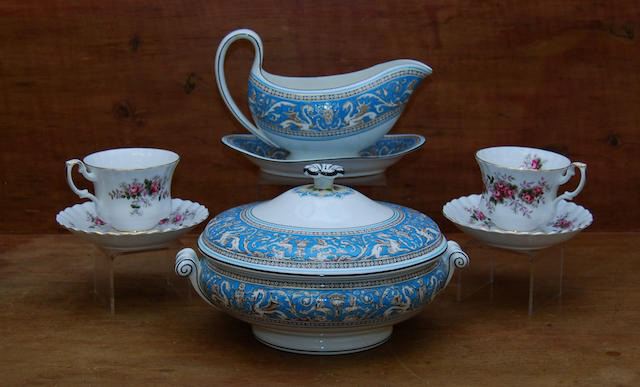
The Wedgwood Florentine pattern displays the richness of Florentine turquoise. The patterns sit elegantly on a fine bone China border in the form of bright colored flowers and mystical figures you can only dream of.
8. Lenox Holiday Pattern
Price: $256
Release Date: 1974
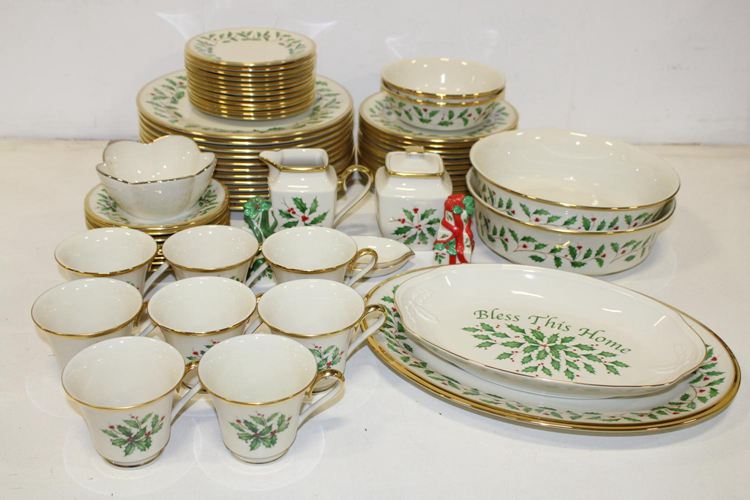
The dinnerware collection got popular in 1974 and featured a holly & berry motif buried in 24K gold to add a classic touch to the Christmas display. The motifs sit beautifully on a plain white background to give that exaggerated effect.
7. Fluted Blue Royal Copenhagen Pattern
Price: $263.40
Release Date: 1940
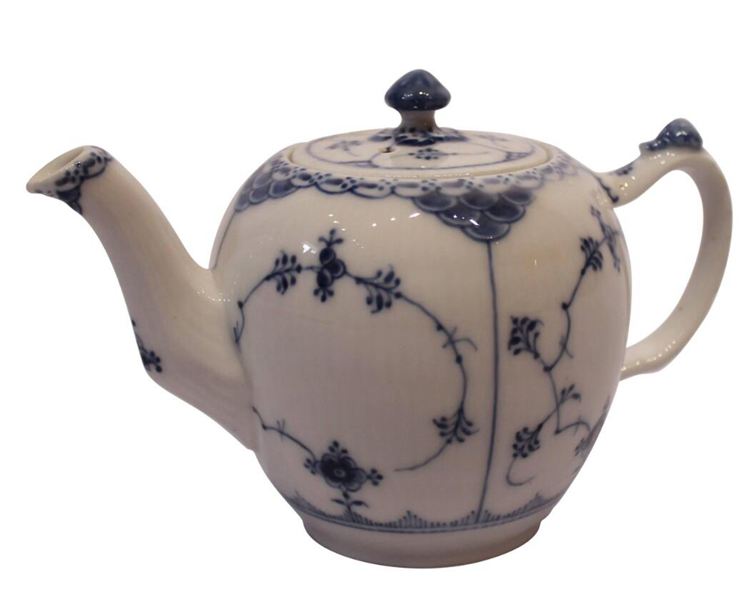
The fluted pattern is the selling point of the pieces from this line. The Royal Copenhagen company was established in Denmark and began creating its fluted pattern in 1775 with a striking blue and white design, and it has continued till today.
This particular teapot was made in the Scandinavian period. It is porcelain, hand painted and in the fluted blue pattern by the royal Copenhagen company.
6. Royal Albert Old Country Roses
Price: £300
Release Date: 1962
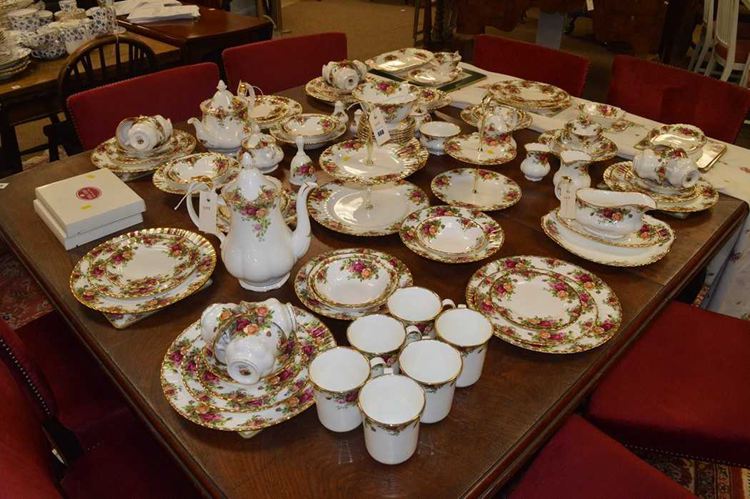
A classic pattern introduced a royal set of teacups in the most subtle shade of pink. The Royal Albert old country roses paint the picture of an old English garden blooming beautifully in the spring. The pieces have rose accents in pink, yellow, and red with a gold trim highlight.
5. Countryware by Coalport
Price: £1,000
Release Date: 1750
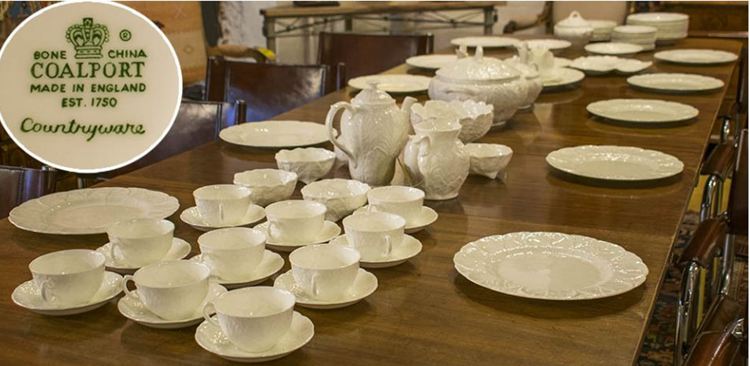
The soft floral texture of this pattern on white China is a conversation starter on any table. So simple, yet so luxurious, so subtle, yet very loud. The Coalport countryware is flexible to fit into any meeting and stand out.
Coalport is a very high-end antique China brand that made pieces for kings, nobles, and the elite class in England during the 18th century hence the elegance surrounding their patterns and rarity.
The pattern imitates elements of nature with the textured leaves that leave a fine finish on the plain China that’s on auction for £1,000.
4. Constance by Bernardaud
Price: $1000
Release Date: 2005
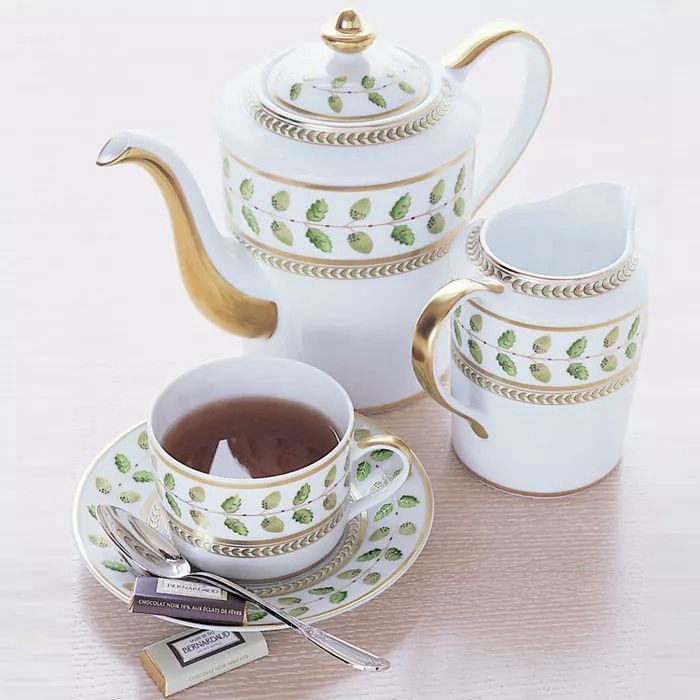
At first glance, you’d discover the fresh green oak and laurel leaves surrounding the edge of a gold-outlined piece. This is what the Constance pattern reminds you of, a fresh green era from the empire period that signifies strength and longevity. This Constance coffee pot sells for $1000 in Bloomingdale.
3. Ming Dragon Red Meissen
Price: $1,478
Release Date: 1730
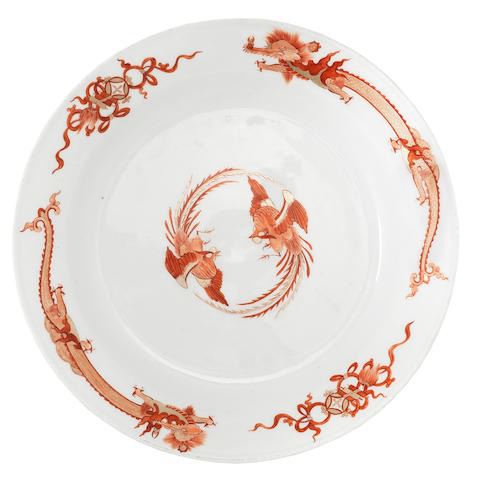
Many patterns were made by the Royal Saxon Porcelain Manufactory in Meissen, like the Red Dragon Line, which is very popular and highly collectible. Look for the crossed swords behind the piece to identify if it’s an original Meissen piece.
This plate shines bright with fiery patterns of flying red dragons over a luminous white background.
2. Flora Danica
Price: $3,840
Release Date: 1790
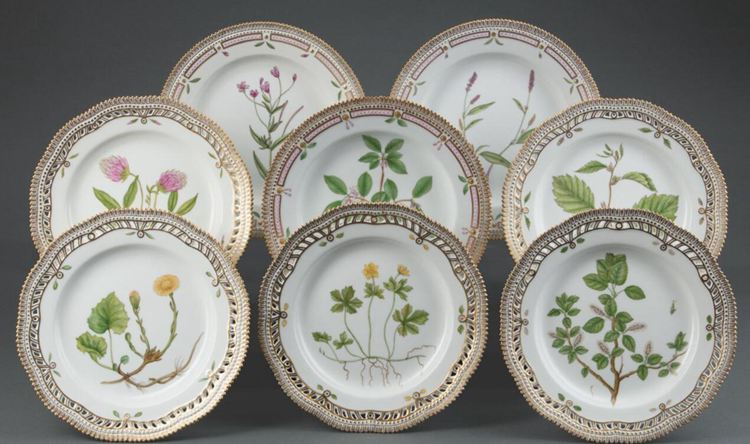
The Flora Danica pattern is only produced based on the order. It’s a botanic pattern from the Royal Copenhagen Company that depicts a Danish flower in the 18th century and is strictly hand painted by the painter on the porcelain piece, so no two pieces are the same.
Flora Danica pieces are quite pricey, rare, and all-around special.
1. Chelsea Anchor Porcelain
Price: $6000
Release Date: 1752
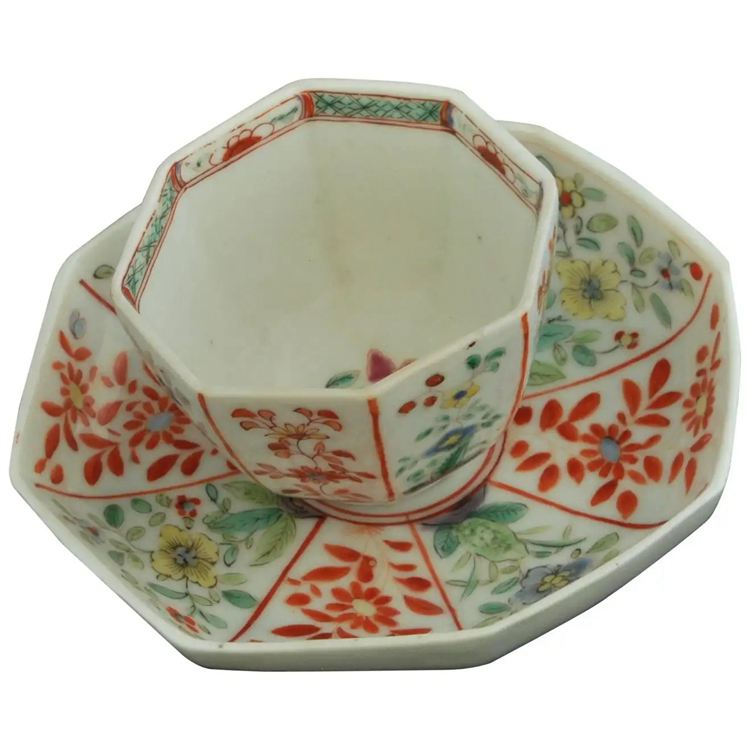
Chelsea Porcelain features a physical garden, insects, butterflies, and plants, all hand painted and stunning. Chelsea porcelain was made towards the tail end of 1749-1752 and is famous for its explicit depiction of fantasy flower fields, gardens, and woodland animals.
How to Identify Unmarked China
Identifying unmarked China can be daunting due to the absence of marks, stamps, and symbols that can help you out. Well, there’s a way you can still figure things out, and we’re here to help you.
You start by identifying the kind of China you have; this will help you discover the materials used, where the factory made it, and when the factory made it. China, like Noritake, Meissen, and other brands, has also made one style of porcelain since its inception, which makes it easier to quickly tell where they’re from.
They’ve divided materials into three categories: Bone China is the most transparent of the three. Soft porcelain is made from clay, softer than kaolin but not translucent like bone China and hard paste China which is the heaviest of the three.
If you feel like you can’t do it by yourself, reach out to an appraiser for professional help. They’ll study China and supply the necessary information to answer your question. YouTube videos and books online are also available for you to read, check pictures, and watch educational videos.
Dating Your Unmarked China
To date your unmarked China, you must study the pattern and check when the company made it- there’s always information about the launch of a pattern, as one or more companies can use the same pattern but add extra features.
- Creamy white hues with the popular blue floral patterns dominated the 1800s, especially in bone China sets.
- Violet-colored floral designs; with curved edges ringed in pastel colors were produced between 1900-1920
- From 1920-1940, China plates with bright, bold colors filled the market, and geometric details in China became a thing too. Collectors, people, and antique lovers also sought ivory-colored China with gold trimmings after.
- Red, green, and blue China flooded the scene from 1940-1950. Those with sleek, rimless designs also shared the popularity.
- From 1950-1970, gold trimmings waned in popularity due to high demand for sleek-looking China dinnerware, while the dwindling fame of pastel China began gradual growth.
Watch this video for further clarity on dating antique china.
Popular Antique China Marks
Marks are symbols by makers of antique China to instill confidence in the buyer and generally to give information about the pieces. Below are some notable and common antique china marks we’ve seen over the years.
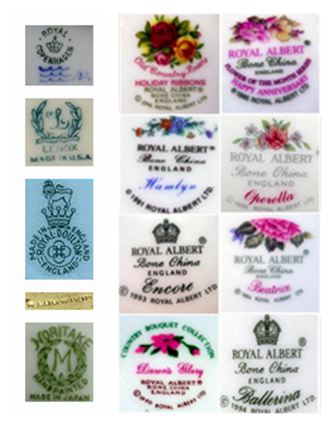
One very popular mark is the Wedgwood mark which was used on bone china and earthenware pieces between 1812-1822. Click here to see how wedgwood stamps evolved over the years.
Yet another popular antique China pattern mark is the Royal Copenhagen mark which was used between 1889-1922 on their China wares. They came in green and three blue wave marks. Here’s more information on some other popular marks adopted by the Royal Copenhagen company.
The green Lenox mark indicated above was used by the company on their porcelain pieces between 1906-1930. Check out others by visiting the oldstuff.
To find more about other antique China marks visit the pdfpro website.
How to Identify Antique China Patterns
Here’re effective ways to help you identify antique China patterns when you see them on plates around the house or in stores.
Engage the Services of an Appraiser
We go to appraisers for different purposes. Sometimes for clarity, inquiries, to get more knowledge about antiques, or to sell their stuff. For early China pieces, most companies launched them without marks, making identification a bit tasking.
Well, the good news is that antique China appraisers can help you out of that dilemma by providing details you don’t know about your piece, using their knowledge over the years, and studying outside the book to find a possible production date and determine the maker.
Identify What Type of China is in Your Arsenal
Before you identify your antique China pattern, you must first figure out your type of China. China is used to qualify porcelain pieces produced in China, Europe, and America. But on a larger scale, several kinds of China passed through set production techniques.
A way to easily know the China type is to know the manufacturer; back in the day, some manufacturers produced a single type of China, which can help you come to a quick and definite conclusion.
There are three types of Porcelain. Bone China, Hard Paste Porcelain, and soft paste porcelain.
- Bone China was created around 1750 in England, and the first set of companies to make pieces from bone china wereSpode and Royal Worcester. These factories made tea sets, dinnerware, pitchers with bone china, and many patterns.
Making bone china involves mixing smooth ground clay to get a very thin, translucent piece.
- Soft Paste Porcelain pieces were made with local clays, especially from the Limoges area of France, which they used to make Limoges China. This clay is softer and doesn’t include the kaolin clay used to make hard-paste porcelain.
- Hard Paste Porcelain represents the original pieces made in china and is currently an integral part of china’s making culture. The making process involved the use of kaolin and ground alabaster. Meissen was the first company to launch hard-paste porcelain into the market in 1710 in Germany.
To further identify the type of china you have, you can lightly tap the edge or body of your china with your fingertips, cane, or a coin to get a tone. You have a hard-paste porcelain piece if the tone is high and very audible.
Check for a Backstamp
Backstamps were put in place by makers and companies of antique China to trademark them, customize them, and help you easily identify them. They can range from one, two to even three stamps. So, be ready to scrutinize the body of the antique as there may be more than on it to help you identify its origin, maker, and year of production.
Turn your China over and check the underside to reveal the marks and help you identify whatever model you have. Kovels and Gotheborg are some of the places where you can confirm and compare marks.
Study the Details
Be conversant with the details on your antique China patterns like gold trimmings and edgings- some luxury manufacturers especially use gold edging on their plates to add extra class and glamor.
Take note of the color too. Some antique patterns have carved a niche by sticking to one color throughout production, like the Willow China, which is almost always blue and white.
Discuss the Numbers
The China Wares produced around the last century have digit codes that come with their stamps. They’re usually 6-8 numbers long and refer to the production date or pattern number, which encompasses both the date and the pattern in China.
Spot The Major Color
Some China pieces come in white or ivory, while some also feature other fancy colors in the background. Tones of red, black, violet, pink, gold, and blue are also major colors for China pieces. The Meissen Ming dragon pattern usually comes in a bright red hue dragon on a white background; the blue willow pattern is also an example of major blue color.
Find Images on Your Plate
You can put an animal, plants, Asians, or human motifs on your antique China plates. These images serve as a guide to recognizing patterns anywhere you see them. Like the Flora Danica pattern, an homage to a special type of Danish flower, and the Meissen Ming China, usually involves pictures of a flying dragon.
Use A Light
You can use a light to determine the authenticity of your fine bone china. When placed under a black light, Fine China would be more transparent than porcelain, and Bone China would be more transparent than both.
Go Online!
The Replacements is a great place to start your journey on online identification of antique China patterns. The website has a large inventory of old, new, and discontinued patterns. You get to also see the makers of these patterns.
Spode Museum Trust is the perfect place for you to identify patterns on your antique Meissen pieces.
How to Know Which China Patterns are Valuable
If you have an antique China in your cabinet or basement and are confused about how to predict its value, we’ve helped you discover the path to discovering what your antique China patterns are worth in today’s market.
By Their Age
The older a china is, the more valuable it becomes due to its production technique back in the day- they’re mostly handcrafted, which means the creators used more time to make them. You can spot old china by looking for age marks, chips, and cracks.
Use An Appraiser
Have an appraiser check your patterns to help determine their true worth. They’re familiar with the patterns, style, and origin of these patterns and can supply you with enough information about their perceived values.
Find The Details
Antique China patterns that tell a specific story, are hand painted, have golden trimmings, or exist in colors slightly different than their peers from the same line are very valuable.
Rarity
The harder it is to procure your antique China pattern, the higher the value. Patterns like Flora Danica and Mottahedeh tobacco leaves patterns are unique and hard to come by; if you lay your hands on one or more, you’re in luck.
Check Online
Price guides and value guides are available online to help you discover the true worth of your China pattern. You can also pick up a book at your local library and get the necessary information.
Do Your Research
Doing as little as reading a book on antique China patterns can help make the difference; they’ll give you the backstory on producing specific patterns and help you understand why they’re special.
The floral Danica pattern, which is only made on order and hand painted by experts, ensures that no two plates have the same details. This has helped control the availability of their pieces and made them highly desirable.
In this video, Dr. Lori gives a precise and detailed appraisal of antique China pieces, their origin, a possible price range, and how to take care of them.
Pro tip: Never stack your china more than six plates high, avoid labeling them as it messes with their glaze, and don’t break sets as the complete set sells for a higher value.
Backstamps Identification Tips
Antique China pieces were usually marked according to their place of origin or production company. These backstamps are located on the bottom or behind your pieces in symbols, writings, and sometimes raised designs.
Due to the Mckinley Tariff act, companies began marking their pieces with stamps and marks indicating their origin and maker. To get more details on your marks, head to Kovel to research them. You can also check out Gotheborg for more insight.
Appraisers are also on the ground to assist you in backstamp identification. By identifying your backstamp, you get information about the age, origin, and type of antique China you have in your possession.
Where to Get Antique China Patterns
Here’s a list of places you can get antique China patterns, more importantly, legitimate pieces.
Auctions
Head to the nearest auction to buy a piece or set of antique China patterns. Be it the ones in this guide or several other patterns; you can always get them at auctions. Here’s a list of auction sites we have curated for you.
Thrift Stores
Items in thrift stores are dominantly preowned and used. However, it doesn’t mean that they’re in terrible shape either; it simply means that they now have some form of provenance, which can make them highly valuable if the previous owner is of reputable status.
Online Stores
eBay, Etsy, Rubylane, and Amazon are your one-stop shop for procuring antique China patterns. You’ll find dozens of antique China sets on these sites with prices that fit your budget. Online stores let you do the selection process and then deliver it straight to your doorstep.
Flea Markets
A flea market is a proper avenue for selling antique China pieces. It’s small, familiar, old, and very intimate, where you also get one-on-one meetings with the sellers. However, items in flea markets are usually old, with flea bites, crackles, or little harmless chips, but they shouldn’t bother you as they’re perfectly normal.
Parting Words
Whether your pattern is fresh, old, or extinct, its colors and elements tell a story that’ll be passed down from generation to generation as they’re done in times past. We’ve armed you with the necessary tools to know deeply about antique China patterns; check out these tips.
- The three types of China are;Fine Bone China, Hard Paste Porcelain, and Soft Paste Porcelain.
- Patterns and colors are one of the ways to identify unmarked antique China,
- Find an Appraiser to help make the identification process much easier and faster.
- Antique China patterns are modeled toward flowers, people, places, and animals.





![Where To Sell Antique Furniture In 2022 [Ultimate Guide]](https://www.jacquelinestallone.com/wp-content/uploads/2022/09/Etsy-Your-Place-To-Buy-And-Sell-All-Things-Handmade-600x450.jpg)


